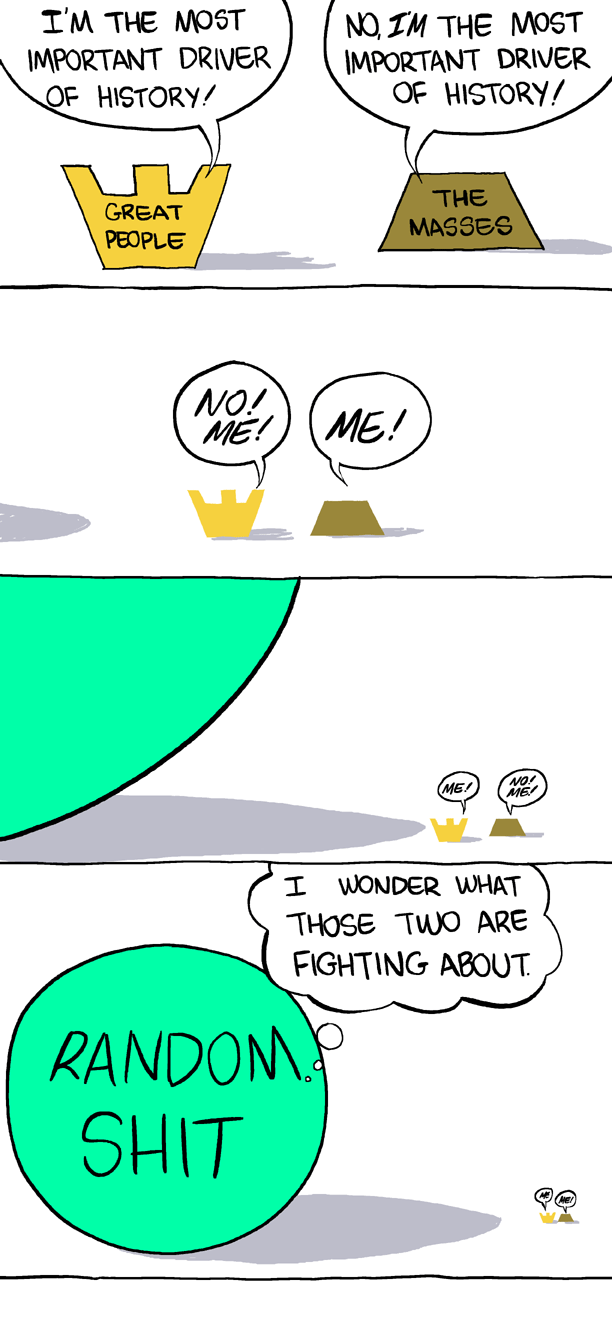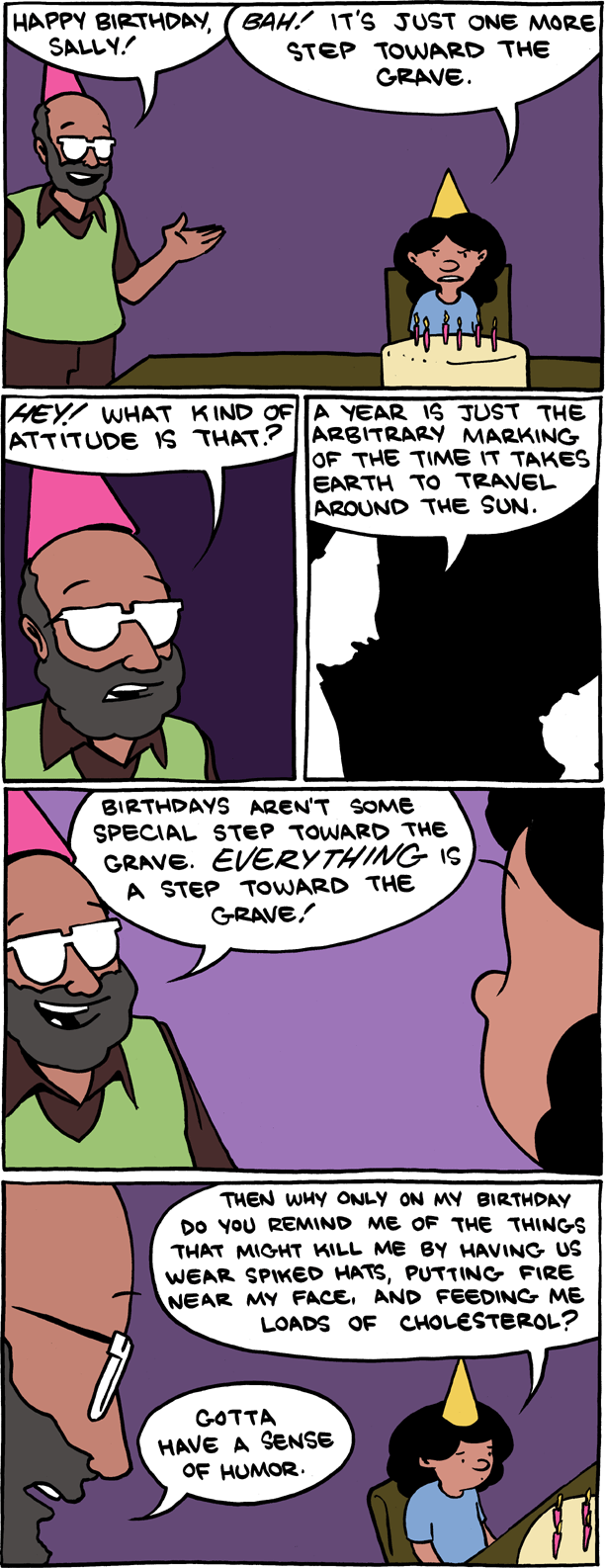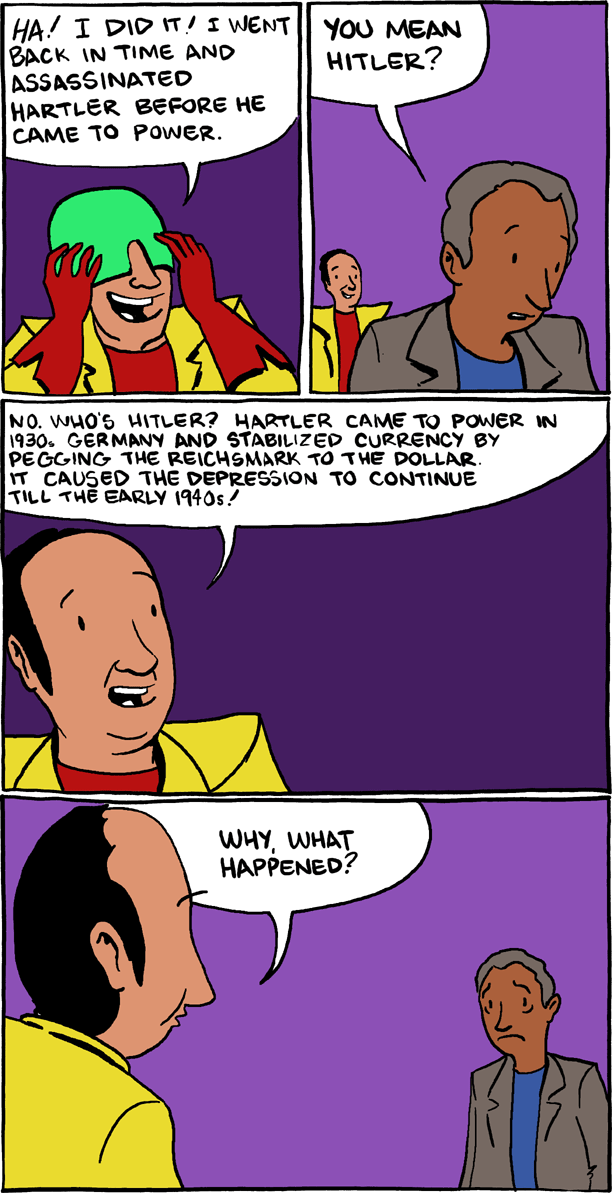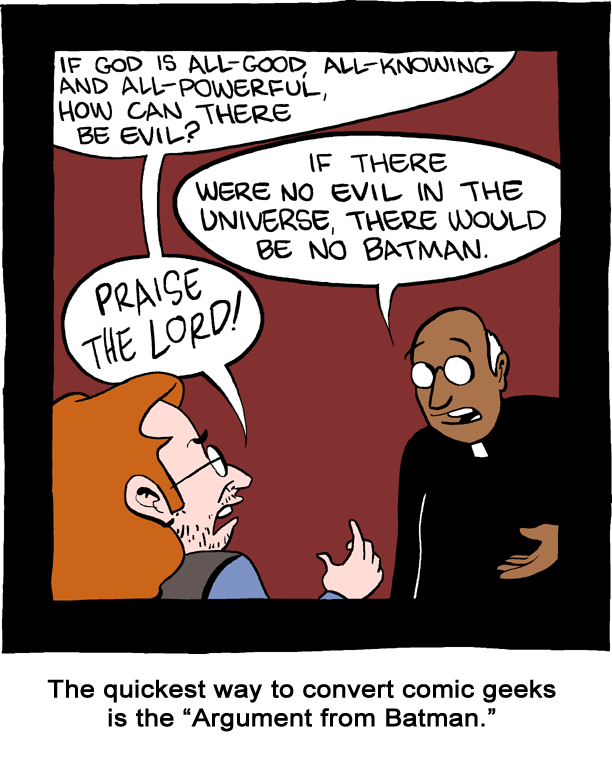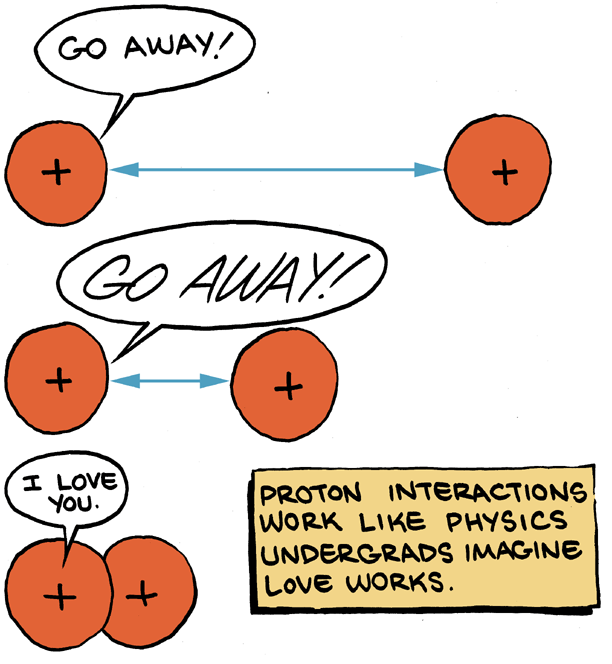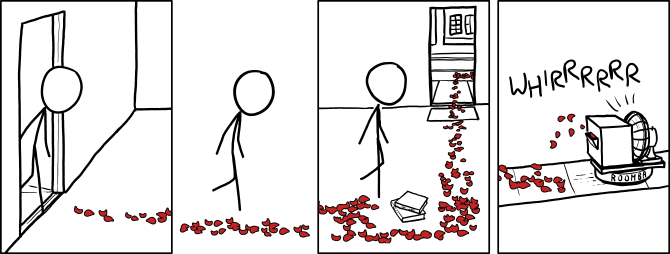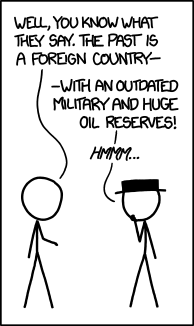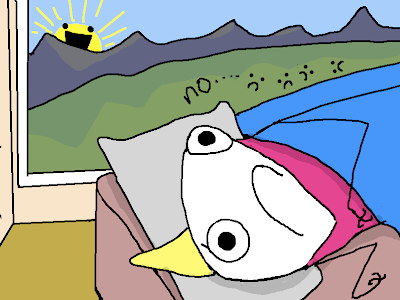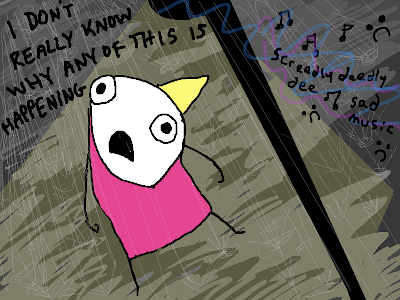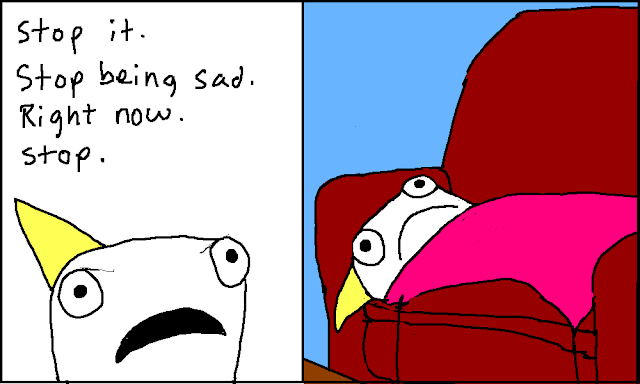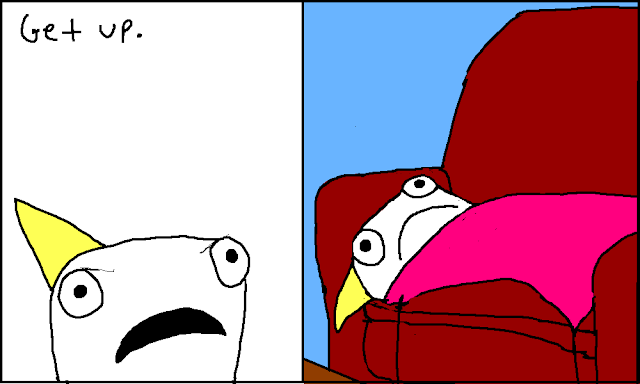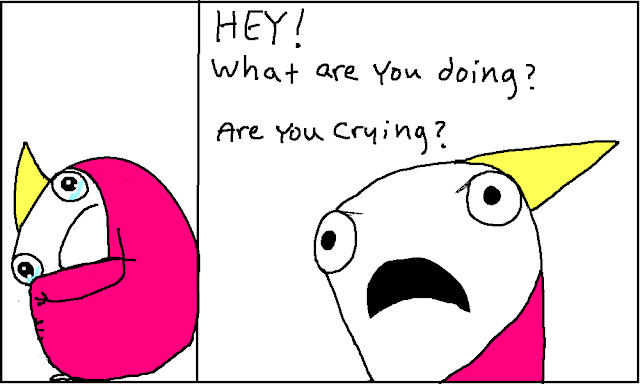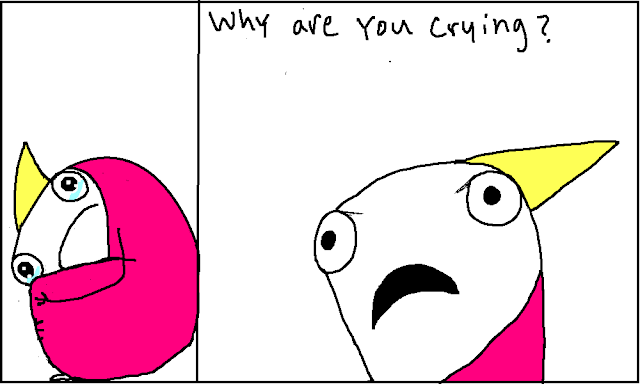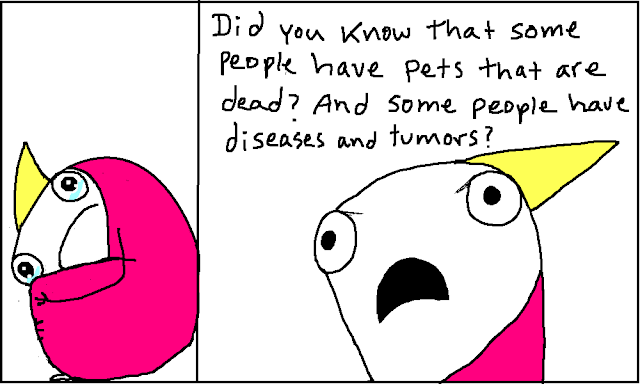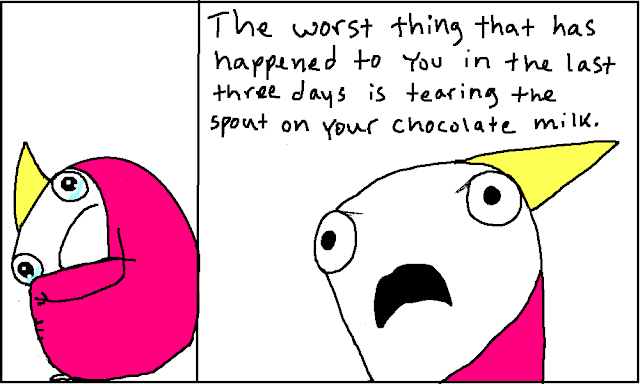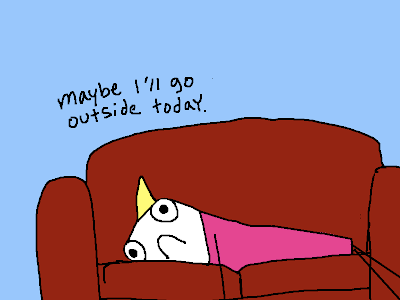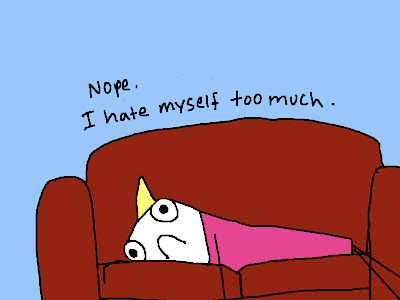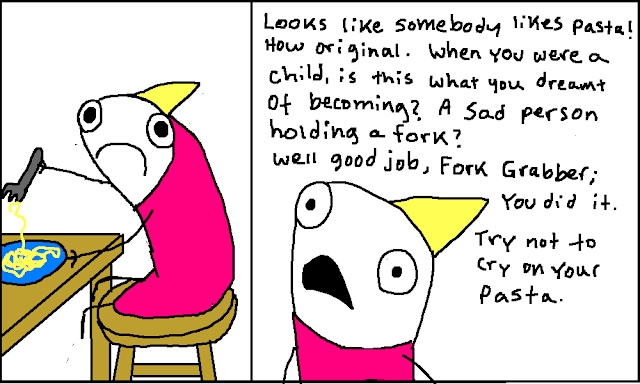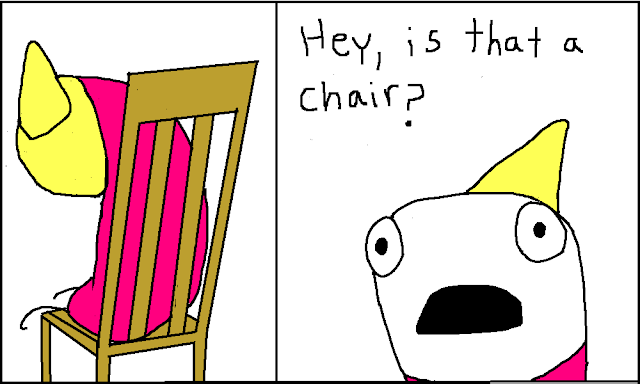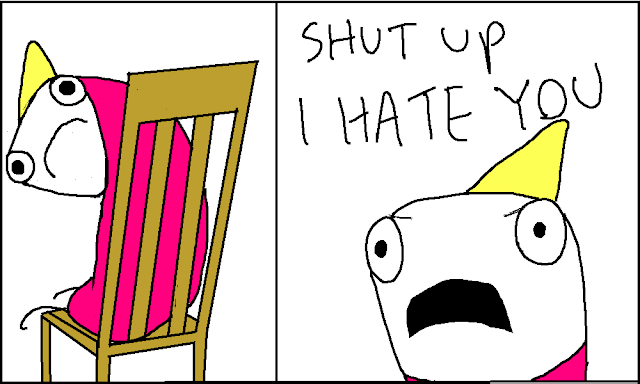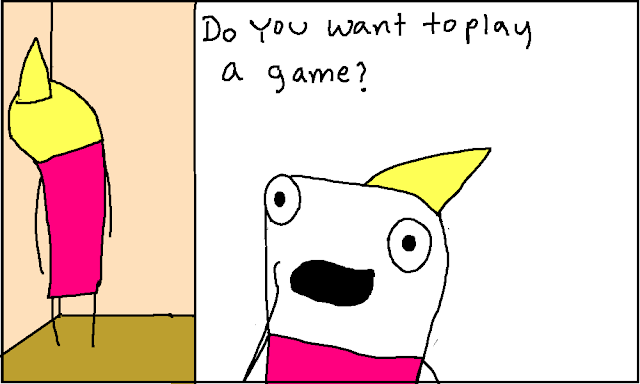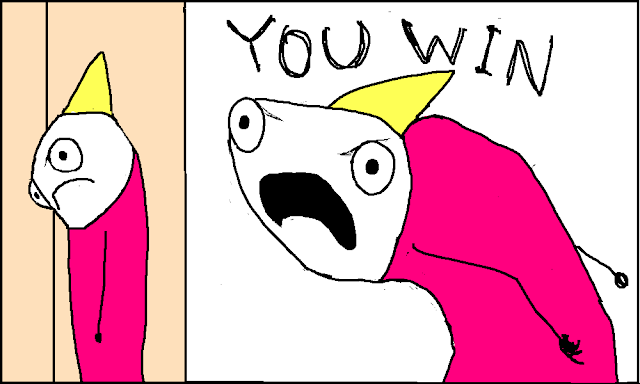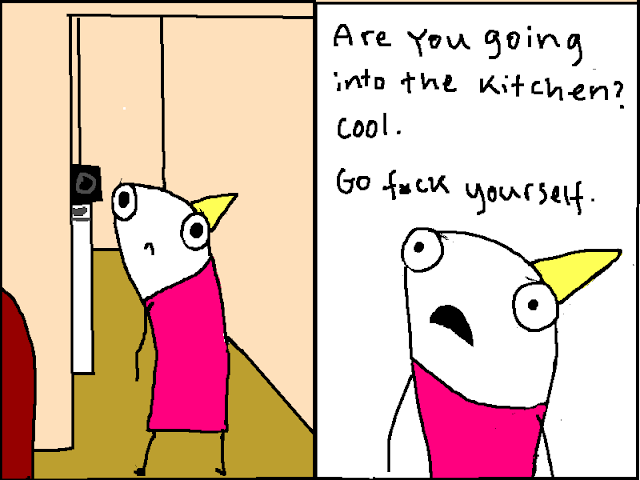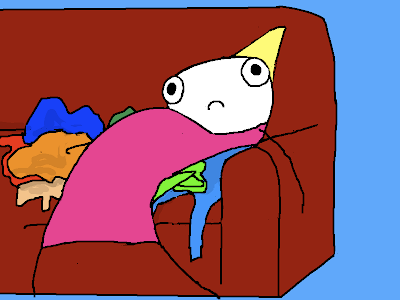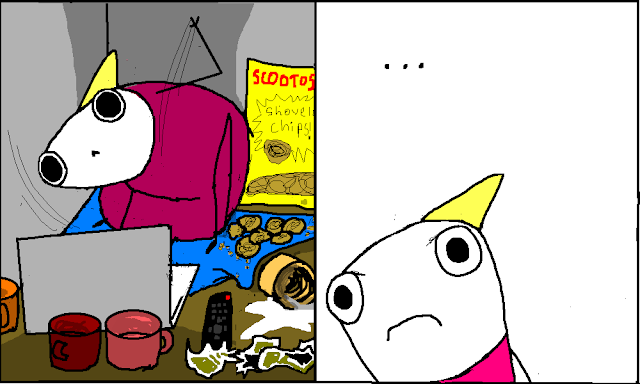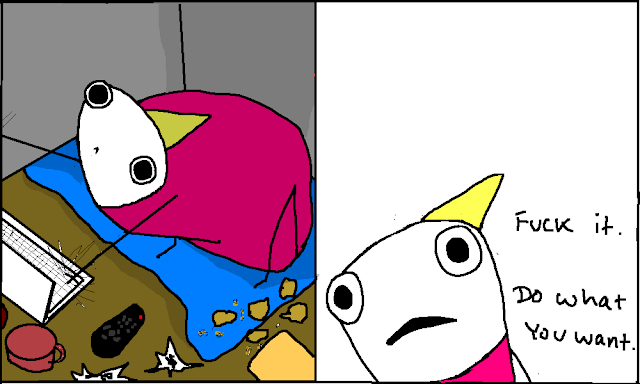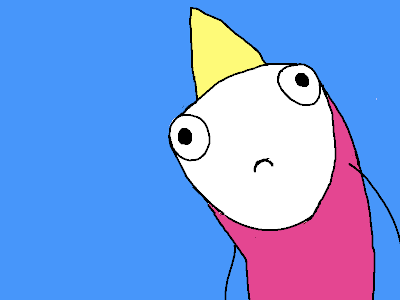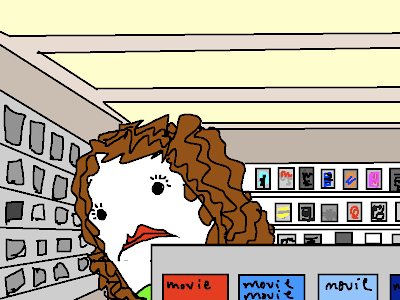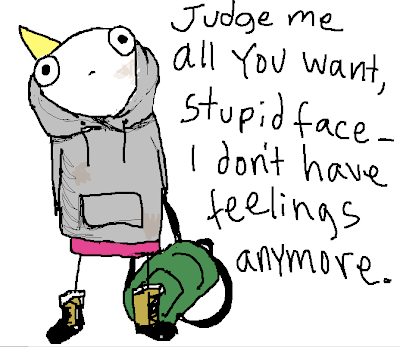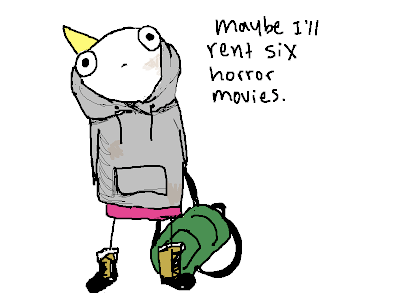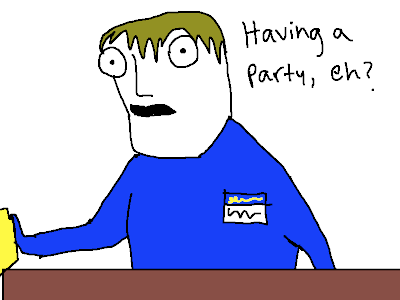The Misconception: You take randomness into account when determining cause and effect.
The Truth: You tend to ignore random chance when the results seem meaningful or when you want a random event to have a meaningful cause.

Source: http://stanhamiltonartgallery.com
Abraham Lincoln and John F. Kennedy were both presidents of the United States, elected 100 years apart. Both were shot and killed by assassins who were known by three names with 15 letters, John Wilkes Booth and Lee Harvey Oswald, and neither killer would make it to trial.
Spooky, huh? It gets better.
Lincoln had a secretary named Kennedy, and Kennedy had a secretary named Lincoln.
They were both killed on a Friday while sitting next to their wives, Lincoln in the Ford Theater, Kennedy in a Lincoln made by Ford.
Both men were succeeded by a man named Johnson – Andrew for Lincoln and Lyndon for Kennedy. Andrew was born in 1808. Lyndon in 1908.
What are the odds?
In 1898, Morgan Robertson wrote a novel titled “Futility.”
Written 14 years before the Titanic sank, 11 years before construction on the vessel even began, the similarities between the book and the real event are eerie.
The novel describes a giant boat called the Titan which everyone considers unsinkable. It is the largest ever created, and inside it seems like a luxury hotel – just like the as yet unbuilt Titanic.
Titan had only 20 lifeboats, half than it needed should the great ship sink. The Titanic had 24, also half than it needed.
In the book, the Titan hits an iceberg in April 400 miles from Newfoundland. The Titanic, years later, would do the same in the same month in the same place.
The Titan sinks, and more than half of the passengers die, just as with the Titanic. The number of people on board who die in the book and the number in the future accident are nearly identical.
The similarities don’t stop there. The fictional Titan and the real Titanic both had three propellers and two masts. Both had a capacity of 3,000 people. Both hit the iceberg close to midnight.
Did Robertson have a premonition? I mean, what are the odds?
In the 1500s, Nostradamus wrote:
Bêtes farouches de faim fleuves tranner
Plus part du champ encore Hister sera,
En caige de fer le grand sera treisner,
Quand rien enfant de Germain observa.
This is often translated to:
Beasts wild with hunger will cross the rivers,
The greater part of the battle will be against Hister.
He will cause great men to be dragged in a cage of iron,
When the son of Germany obeys no law.
That’s rather creepy, considering this seems to describe a guy with a tiny mustache born about 400 years later. Here is another prophecy:
Out of the deepest part of the west of Europe,
From poor people a young child shall be born,
Who with his tongue shall seduce many people,
His fame shall increase in the Eastern Kingdom.
Wow. Hister certainly sounds like Hitler, and that second quatrain seems to drive it home. Actually, Many of Nostradamus’ predictions are about a guy from Germania who wages a great war and dies mysteriously.
What are the odds?
If any of this seems too amazing to be coincidence, too odd to be random, too similar to be chance, you are not so smart.
You see, in all three examples the barn was already peppered with holes. You just drew bullseyes around the spots where the holes clustered together.
Allow me to explain.
Say you go on a date, and the other person reveals they drive the same kind of car you do. It’s a different color, but the same model.
Well, that’s sort of neat, but nothing amazing.
Let’s say later on you learn their mom’s name is the same as your mom’s, and your mothers have the same birthday.
Hold on a second. That’s pretty cool. Maybe the hand of fate is pushing you toward the other person. Later still, you find out you both own the box set of Monty Python’s Flying Circus, and you both grew up loving Rescue Rangers. You both love pizza, but hate rutabagas.
This is meant to be, you think. You are made for each other.
But, take a step back. Now, take another.
 How many people in the world own that model of car? You are both about the same age, so your mothers are too, and their names were probably common in their time. Since you have similar backgrounds and grew up in the same decade, you probably share the same childhood TV shows. Everyone loves Monty Python. Everyone loves pizza. Many people hate rutabagas.
How many people in the world own that model of car? You are both about the same age, so your mothers are too, and their names were probably common in their time. Since you have similar backgrounds and grew up in the same decade, you probably share the same childhood TV shows. Everyone loves Monty Python. Everyone loves pizza. Many people hate rutabagas.
Looking at the factors from a distance, you can accept the reality of random chance.
When you desire meaning, when you want things to line up, you forget about stochasticity. You are lulled by the signal. You forget about noise. With meaning, you overlook randomness, but meaning is a human construction.
You have just committed the Texas Sharpshooter Fallacy.
The fallacy gets its name from imagining a cowboy shooting at a barn. Over time, the side of the barn becomes riddled with holes. In some places there are lots of them, in others there are few. If the cowboy later paints a bullseye over a spot where his bullet holes clustered together it looks like he is pretty good with a gun.
By painting a bullseye over a bullet hole the cowboy places artificial order over natural random chance.
If you have a human brain, you do this all of the time. Picking out clusters of coincidence is a predictable malfunction of normal human logic.
When you are dazzled by the idea of Nostradamus predicting Hitler, you ignore how he wrote almost 1,000 ambiguous predictions, and most of them make no sense at all. He seems even less interesting when you find out Hister is the Latin name for the Danube River.
When you marvel at the similarities between the Titan and the Titanic, you disregard that in the novel only 13 people survived, and the ship sank right away, and the Titan had made many voyages, and it had sails. In the novel, one of the survivors fought a polar bear before being rescued.
When you are befuddled by the Lincoln and Kennedy connections, you neglect to notice Kennedy was Catholic and Lincoln was born Baptist. Kennedy was killed with a rifle, Lincoln with a pistol. Kennedy was shot in Texas, Lincoln in Washington D.C. Kennedy had lustrous auburn hair, while Lincoln wore a haberdasher’s wet dream.
With all three examples there are thousands of differences, all of which you ignored, but when you draw the bullseye around the clusters, the similarities – whoa.
If hindsight bias and confirmation bias had a baby, it would be the Texas Sharpshooter Fallacy.
When reality shows are filmed, the producers have hundreds of hours of footage. When they condense that footage into an hour, they paint a bullseye around a cluster of holes. They find a narrative in all the mundane moments, extracting the good bits and tossing aside the rest. This means they can create any orderly story they wish from their reserves of chaos.
Was that one girl really a horrific bitch? Was that guy with the tattoos really that dumb? Unless you can pull back and see the entire barn, you’ll never know.
The reach of the fallacy is far greater than reality shows, presidential trivia and spooky coincidences. When you use the sharpshooter fallacy to determine cause from effect, it can harm people.
One of the reasons scientists form a hypothesis and then try to disprove it with new research is to avoid the Texas Sharpshooter Fallacy. Epidemiologists are especially wary of it as they study the factors which lead to the spread of disease.
If you look at a map of the United States with dots assigned to where cancer rates are highest, you will notice areas of clumping. It looks like you have a pretty good indication of where the groundwater must be poisoned, or high-voltage power lines are bombarding people with damaging energy fields, or where cell phone towers are frying people’s organs, or where nuclear bombs must have been tested.
A map like that is a lot like the side of the sharpshooter’s barn, and presuming there must be a cause for cancer clusters is the same as drawing bullseyes around them.
More often than not, cancer clusters have no scary environmental cause.
“A community that is afflicted with an unusual number of cancers quite naturally looks for a cause in the environment – in the ground, the water, the air. And the correlations are sometimes found: the cluster may arise after, say, contamination of the water supply by a possible carcinogen. The problem is that when scientists have tried to confirm such causes, they haven’t been able to. Raymond Richard Neutra, California’s chief environmental health investigator and an expert on cancer clusters, points out that among hundreds of exhaustive, published investigations of residential clusters in the United States, not one has convincingly identified an underlying environmental cause. Abroad, in only a handful of cases has a neighborhood cancer cluster been shown to arise from an environmental cause. And only one of these cases ended with the discovery of an unrecognized carcinogen.”
The Cancer Cluster Myth, The New Yorker, Feb. 1999
There are many agents at work. People who are related tend to live near each other. Old people tend to retire in the same areas. Eating, smoking and exercise habits tend to be similar region to region. And, after all, one in three people will develop cancer in their lifetime.
To accept something like residential cancer clusters are often just coincidence is deeply unsatisfying. The powerlessness, the feeling you are defenseless to the whims of chance, can be assuaged by singling out an antagonist. Sometimes you need a bad guy, and The Texas Sharpshooter Fallacy is one way you can create one.
According to the Centers for Disease Control the number of autism cases among 8-year-olds increased 57 percent from 2002 to the 2006. Looking back over the last 20 years, the rates of autism have gone up 200 percent. Today, 1 in 70 male children has some form of autism spectrum disorder.
When those numbers were released, it seemed absolutely nuts. Parents around the world panicked. Something must be causing autism numbers to rise, right?
Early on, a bullseye was painted around vaccines because symptoms seemed to show up about the same time as kids were getting vaccinated. Once they had a target, a cluster, they failed to see all the other correlations. After years of research and millions of dollars, vaccines have been ruled out, but some parents and celebrities refuse to accept the findings. Singling out vaccines while ignoring the millions of other factors is the same as noting the Titan hit an iceberg but omitting it had sails.
 Lucky streaks at the casino, hot hands in basketball, a tornado sparing a church – these are all examples of humans finding meaning after the fact, after the odds are tallied and the numbers have moved on. You are ignoring the times you lost, the times the ball missed the basket and all the homes the tornado blindly devoured.
Lucky streaks at the casino, hot hands in basketball, a tornado sparing a church – these are all examples of humans finding meaning after the fact, after the odds are tallied and the numbers have moved on. You are ignoring the times you lost, the times the ball missed the basket and all the homes the tornado blindly devoured.
In World War II, Londoners took notice when bombing raids consistently missed certain neighborhoods. People began to believe German spies lived in the spared buildings. They didn’t. Analysis afterward by psychologists Daniel Kahneman and Amos Tversky showed the bombing strike patterns were random.
Anywhere people are searching for meaning, you will see the Texas Sharpshooter Fallacy. For many, the world loses luster when you accept the idea random mutations can lead to eyeballs or random burn patterns on toast can look like a person’s face.
If you were to shuffle a deck and draw out 10 cards, the chances of the sequence you drew coming up are in the trillions, no matter what they are. If you drew out an ordered suit, it would be astonishing, but the chances are the same as any other set of 10 cards. The meaning is a human construct.
Look outside. See that tree? The chances of it growing there on that spot, on this planet, circling this star in this galaxy among the billions of galaxies in the known universe are so incredibly small it seems to have meaning, but that meaning is only a figment of your imagination. You are drawing a bullseye around a cluster on a vast barn.
It is no less astronomical the odds of it being there than the patch of dirt beside it. The same is true if you looked out onto a desert and found a lizard, or into the sky and found a cloud, or into space and saw nothing but hydrogen atoms floating alone. There is a 100 percent chance something will be there, be anywhere, when you look, but only the need for meaning changes how you feel about what you see.
For as long as there been humans we have searched for our place in the cosmos. Where are we? Who are we? We find that we live on an insignificant planet of a hum-drum star lost in a galaxy tucked away in some forgotten corner of a universe in which there are far more galaxies than people. This perspective is a courageous continuation of our penchant for constructing and testing mental models of the skies; the Sun as a red-hot stone, the stars as a celestial flame, the Galaxy as the backbone of night.
- Carl Sagan
To admit the messy slog of chaos, disorder and random chance rules your life, rules the universe itself, is a painful conceit. You commit the Texas Sharpshooter Fallacy when you need a pattern to provide meaning, to console you, to lay blame.
You mow your lawn, arrange your silverware, comb your hair. Whenever possible, you oppose the forces of entropy and thwart their relentless derangement.
Your drive to do this is primal. You need order. Order makes it easier to be a person, to navigate this sloppy world.
Pattern recognition leads to food, protects you from harm. You are born looking for clusters where chance events have built up like sand into dunes. You are able to read these words because your ancestors recognized patterns and changed their behavior to better acquire food and avoiding becoming it.
Carl Sagan said in the vastness of space and the immensity of time it was a joy to share a planet and epoch with his wife. Even though he knew fate didn’t put them together, it didn’t take away the wonder he felt when he was with her.
You see patterns everywhere, but some of them are formed by chance and mean nothing. Against the noisy background of probability things are bound to line up from time to time for no reason at all. It’s just how the math works out. Recognizing this is an important part of ignoring coincidences when they don’t matter and realizing what has real meaning for you on this planet, in this epoch.
 You Are Not So Smart – The Book
You Are Not So Smart – The Book
If you buy one book this year…well, I suppose you should get something you’ve had your eye on for a while. But, if you buy two or more books this year, might I recommend one of them be a celebration of self delusion? Give the gift of humility (to yourself or someone else you love). Watch the trailer.
Order now: Amazon - Barnes and Noble - iTunes - Books A Million
Links:
Kennedy and Lincoln Similarities
Radiolab on Stochasticity
The Prophecies of Nostradamus
The Complete Text of “Futility”
The Bible Code
Neurologica on Autism Rates
London Bombing Study
The Global Consciousness Project
Cubik’s Rube on The Texas Sharpshooter Fallacy
Frontline: Currents of Fear
The Cancer Cluster Myth – PDF
Reality TV Editing


















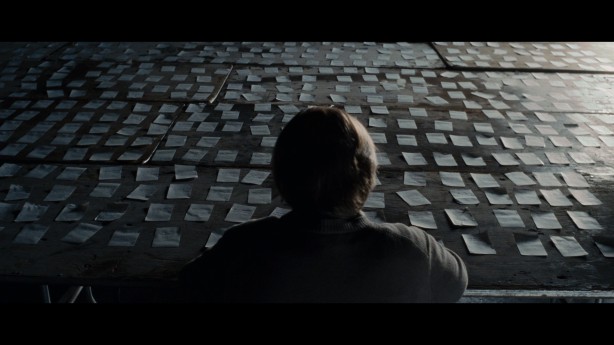



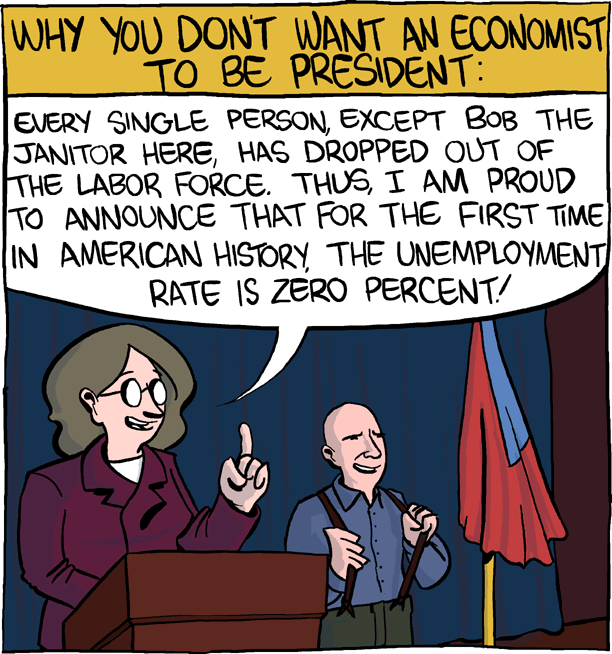





 facebook
facebook  reddit
reddit 
